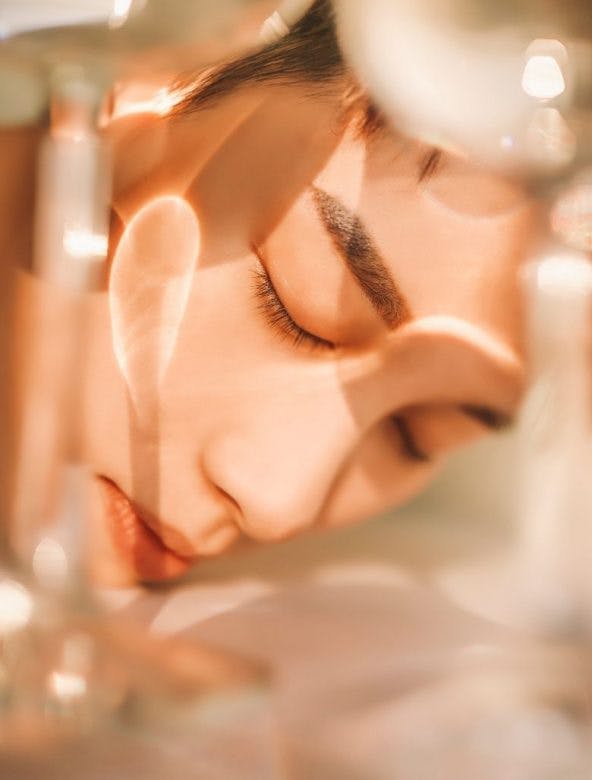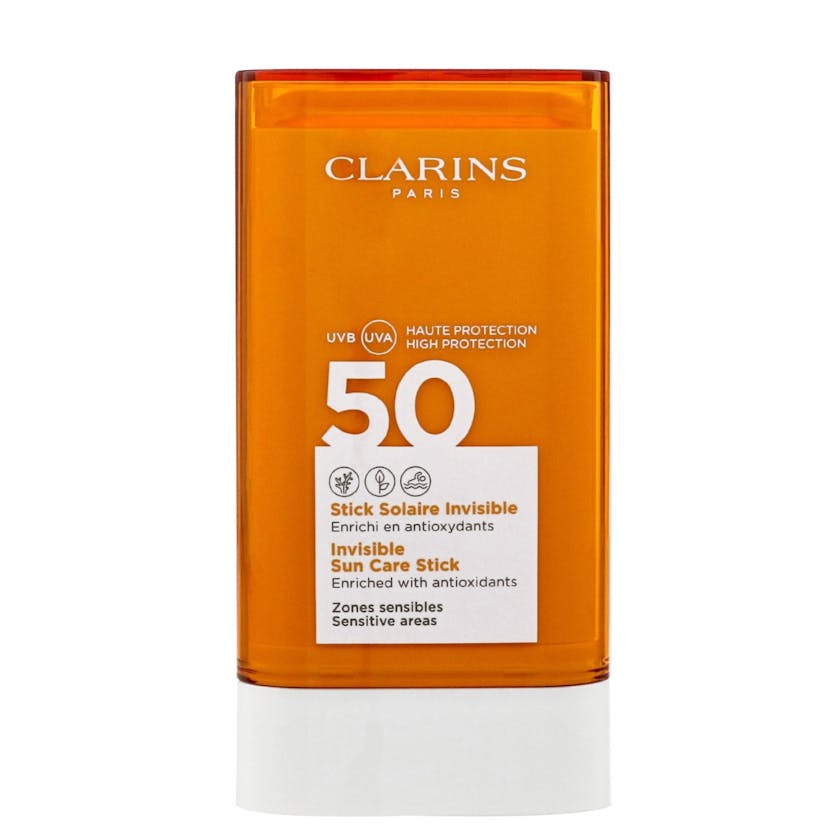Daily Sunscreen: What SPF Is Best For Your Face?
6 minutes read
Drum roll please…. SPF for the face should be used every. single. day. We know, you’ve heard it a million times already. However, it’s not only the key to the health of your skin, but actually how it looks and behaves. It should be made the No.1 product in your beauty arsenal for better looking skin.
The good news is, daily sunscreen for the face is not a chore. They are pleasant, not gunky, glow-giving instead of the ghastly white caste of yesteryear. The latest batch also makes for a brilliant base for foundation and concealer; it has anti-pollution protection and won’t propel a breakout for combination or acne-prone skin.
So as the sun comes out and we’re busy scrubbing off the fake tan, let’s talk about the benefits of sunscreen? It’s simple. Exposing your skin to ultraviolet (UV) light, whether natural (the sun’s harsh rays) or artificial (a tanning bed), is the leading cause of melanoma, the most common form of cancer in the world. So using sunscreen on your face and body every day is the best preventative method, according to long-term research.

Sunscreen for the face vs. the body: what’s the difference?
Clarins Training Manager, Charlotte McHale explains: “You need to be aware of the differences between the skin on your face and body and then make the appropriate choice. Clarins’ face and body sunscreens have different ingredients; we put facial skincare ingredients in our sun care facial products, including some which are particularly good for combating premature ageing caused by the sun. They also have a slightly different texture.
“If a product is formulated specifically for the face, that means it’s been tested there, so we know it’s safe to use. If you put a body product on your face, you’re doing so knowing that it hasn’t been specifically formulated for the delicate skin of the face.”
Why use a separate face sunscreen?
Your face is often more sensitive than the rest of your body, so many people prefer a lightweight, non-greasy sunscreen formulated specifically for the face, especially for everyday wear. These are less likely to clog pores, cause breakouts, or irritate the skin.
Plus, the body formulations can be highly fragranced – the coconut, floral or muskier concoctions smell lovely on warmed limbs; team that with dense pore-clogging oils – and your skin will sprout spots and irritations before you’ve even donned your summer kaftan.
Daily sunscreen for the face
It’s crucial to apply SPF daily as part of your skincare routine. Some people think they only need sunscreen when they’re outside in the sun. But harsh UV rays can damage the skin when it’s cloudy, or you’re sitting inside. “Even when the sun is nowhere to be seen, 80% of its UV rays still hit your skin,” explains the Academy of Dermatology.
You’re still likely to come into contact with UV rays through the window – be it your at-home office or the car. Also, did you know it takes about twenty minutes for (non-mineral) sunscreen to become effective?
Studies show that daily sunscreen for the face can significantly lower your risk of skin cancer and signs of skin ageing, such as wrinkles, hyperpigmentation and dark spots.
It’s also important to use sunscreen when you use skincare ingredients such as retinol, AHA and BHA, which can cause your skin to become photosensitive, as we discuss in The Best And Worst Beauty Products To Wear Under The Sun.
The difference between UVA and UVB rays
UVB rays cause sunburn. They play a key role in developing skin cancer. UVA rays causes skin damage. They tan the skin and are also responsible for skin ageing and wrinkles.
If you see the words ‘broad spectrum’ on your sunscreen label, this means the product protects your skin from both UVA and UVB rays.
Is SPF 30 or 50 better for face?
SPF (sun protection factor) measures the amount of solar energy required to cause sunburn when you’re wearing sunscreen compared to when your skin is completely unprotected.
“A sunscreen with an SPF of 30, used as directed, prevents 97% of UVB rays from reaching your skin,” says The Journal of Clinical & Aesthetic Dermatology. SPF50 blocks 98%, it says. “While higher SPFs offer more protection, they don’t last any longer than those with lower numbers. So you need to reapply them just as often.”
Higher or lower SPF – what’s best?
A clinical trial found that “The minimum SPF to use is 30.” Period. Here’s how to calculate the SPF number to use:
- A sunscreen’s SPF number refers to how much UVB protection it provides. For instance, SPF30 protection means the skin would take 30 times longer to burn than if you weren’t wearing sunscreen.
- SPF30 only allows around 3% of UVB rays to reach your skin, while SPF50 lets about 2% of rays through.
- The best sunscreen? “A water-resistant, broad-spectrum sunscreen with an SPF of 30 or higher for any extended outdoor activity. Reapply 30 minutes before going outside and every two hours after that.”
Why SPF for the face is important
We’ve talked about the high and low, the UVA and the UVB, so now it’s time to discuss how to decide which one is right for you.
What SPF to use daily?
Everyday Health suggests calculating the SPF according to the amount of protection your face needs on a given day.
“The best sunscreen to use is the one you want to use,” McHale says. “Make sure it’s one you like, that you enjoy the smell and the texture. And make sure it doesn’t sting your eyes because sunscreen is useless if it’s sitting on the shelf. It’s got to be one that you enjoy applying, which suits your skin. It doesn’t make you break out; it doesn’t smell weird. That’s your everyday face sunscreen.”
What to consider when looking for a daily face sunscreen
Ingredients
The American Academy of Dermatology Association (AAD) says mineral sunscreens contain zinc oxide and titanium dioxide – tiny particles that sit on the skin’s surface and stop UV rays from penetrating. These ingredients have been declared safe and effective by the US Food & Drug Administration (FDA).
Chemical sunscreens allow UV light to be absorbed into the skin. Their ingredients – oxybenzone, avobenzone, octisalate, octocrylene, homosalate and octinoxate – “create a chemical reaction where UV light is converted to heat, and the heat dissipates from the skin.”
SPF for your skin type
Just like other skincare products, there are different formats of SPFs that will be better suited for certain skin types. Here’s what you need to know.
The best sunscreen for face
For oily, combination and blemish-prone skins: Dry Touch Sun Facial Sun Care for Face UVA/UVB 30, £24, is a top rated sunscreen for face that wont congest pores or cause breakouts.

The best SPF for oily skin: Invisible Gel-to-Oil Facial Sun Care UVA/UVB 30, £24.
For city dwellers: If you live in a large city, try the UV Plus [5P] Anti-Pollution Translucent or Rose – these shades suit all skin tones. In the sun all day? Get your hands on an Invisible Sun Care Stick SPF50, £22.

Face sunscreen for sensitive skin: Mineral Facial Sun Care Liquid SPF 30, £24.
Sunscreen application: How much?
Pour a third of a teaspoon of sunscreen (the size of two peas) into the palm of your hand.
Using a fingertip, dot the sunscreen onto cheeks, forehead and chin.
Also apply to hairline, ears and temples.
Pat in gently.
So now you know, SPF is a non-negotiable part of your daily skincare routine. Find the one for your skin needs and start reaping the benefits!
Next read: Eye Cream with SPF.
Sign up for our newsletter
We will keep you in the loop for special offers, exclusive gifts and product news.

